We all love to drive cars and maintain them dearly. We seldom go anywhere without our gas-guzzling car. Back in 1975, the EPA made all automobiles to feature a converter catalytic in the United States. Without these converters, a car cannot pass the emissions test, or you will leave a far bigger carbon footprint. This converter is present within the exhaust system within the muffler and the engine of your car.
With a clogged catalytic converter, you can leave a bigger carbon footprint, and your car is not fit for the environment. If you have been dealing with the issue of a bad catalytic converter, then this guide will help you out with this matter. It is a critical matter to make sure that your vehicle has a reduced environmental impact.
So let’s find out what this highly important component is and how to deal with its clogging!
What are Catalytic Converters?
Over 90% of modern cars are run by internal combustion engines or ICE. And This particular engine is going to stay for a while until electric cars entirely take over the industry. But this is not the ideal type of engine either because it has a tendency to release toxic and harmful chemicals with a negative impact on the environment and air pollution.
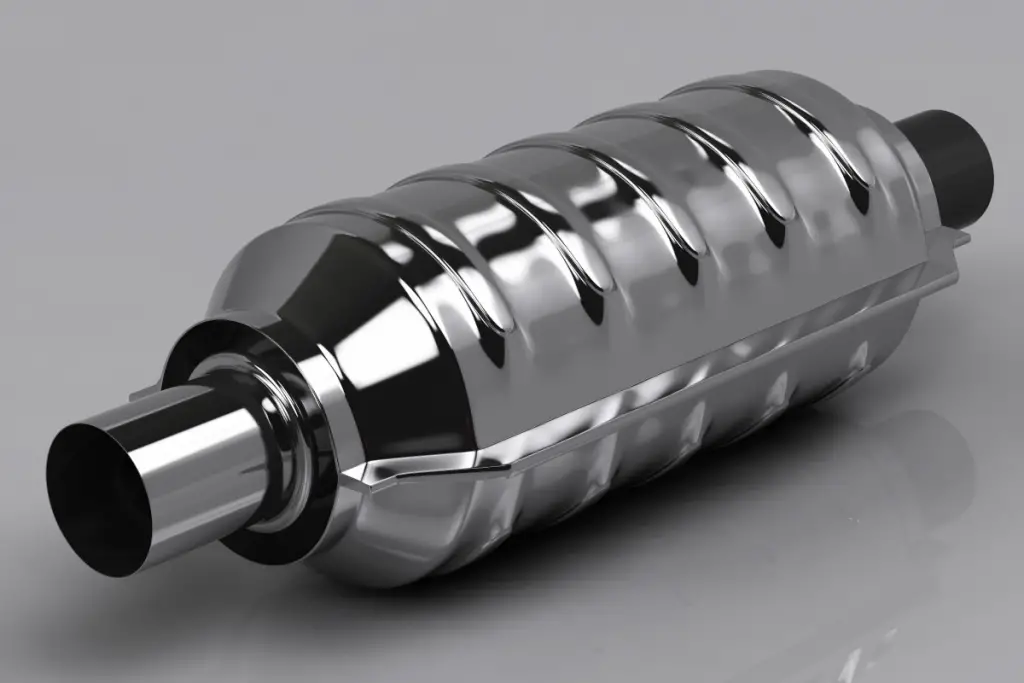
Catalytic converters are designed to tackle this issue and reduce such harmful emissions with the help of precious metals. The purpose here is to convert the harmful emissions into non-toxic substances. And with the ever so growing environmental awareness in the modern era, these catalytic converters are considered to be one of the most important inventions of the modern automobile industry.
Here’s a video link that explains what catalytic converters are.
What Does a Bad Catalytic Converter Mean?
As we have just mentioned, catalytic converters are designed to reduce the carbon footprint of your car. It means that with this component not working your car is releasing harmful emissions which can be dangerous for the environment.
It is mandatory for a car on the road to pass the emissions test, and for that, it needs to have a working catalytic converter or “cat” for short. It works by breaking down any unburned exhaust gases that are released due to the combustion process. These exhaust gases include the likes of carbon monoxide, nitric oxide, different hydrocarbons.
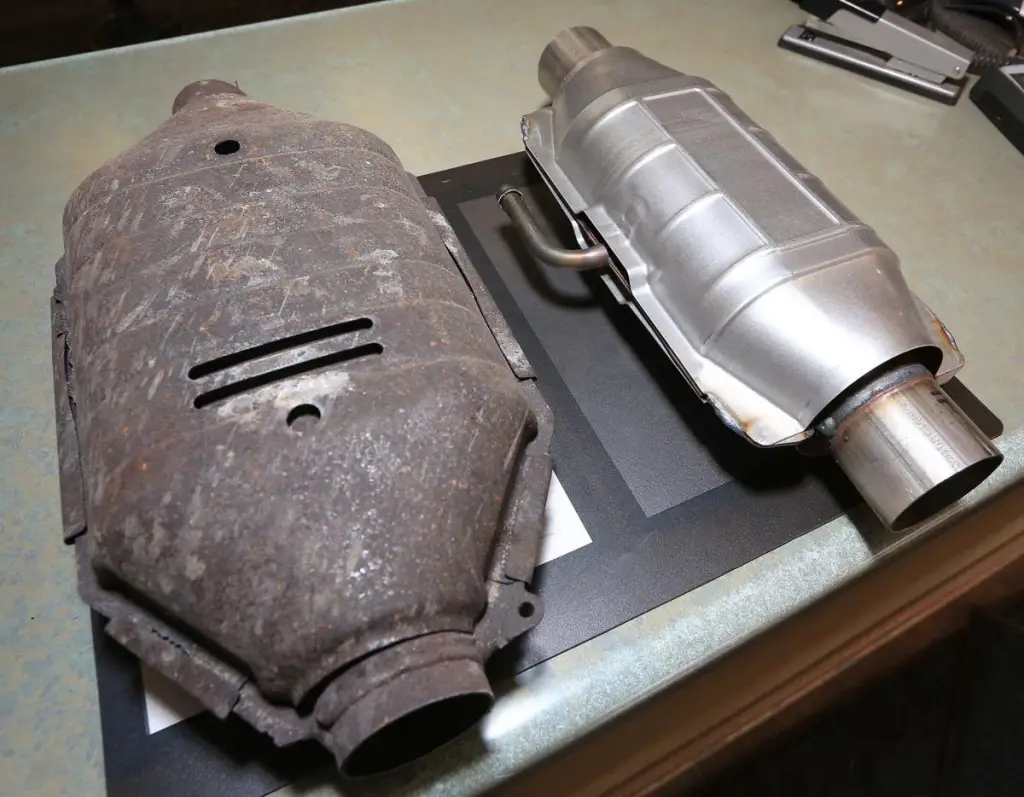
All these exhaust gases are harmful to human health and the environment. When you start the engine, these gases pass through the converter that has honeycomb-shaped ceramic coated materials made of copper, palladium, and platinum.
At high temperatures, the converter converts these gases into the water, carbon dioxide, and oxygen. With a clogged catalytic converter, this conversion process doesn’t occur. And when you don’t unclog it in a timely fashion, this clogging can break the converter into pieces.
Here’s a video link that elaborates on this issue.
Symptoms of a Catalytic Converter Clogging in Your Car
Clogged catalytic converters are different from damaged or worn-out ones. But they might present you with similar symptoms. Therefore, we can safely assume that a bad catalytic converter might not be clogged and it can lose its efficiency without clogging. But a clogged cat can also create some backpressure as it is restricting the exhaust flow. It means that your engine is not breathing properly.
Here are some of the common symptoms of a clogged catalytic converter.
Malfunction indicator lamp illuminated
Check engine light in your car’s dash, if it’s illuminated; it is telling you that the engine is not working properly, and you need to get it to your mechanic for an examination.
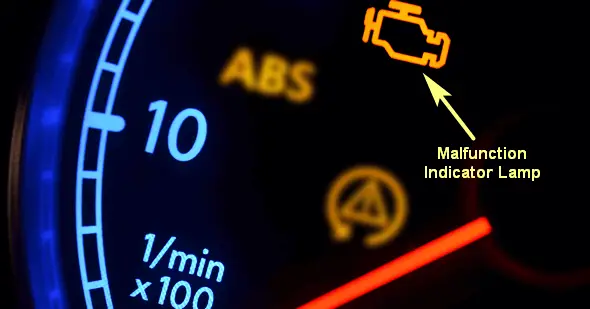
The engine doesn’t start or stalls.
With the exceeding back pressure, your engine begins to choke, and it starts stalling. And if the blockage is too much your engine will die down pretty soon after you have started it.
Poor engine performance and fuel economy
With your catalytic converter clogged your engine underperforms and its fuel efficiency drops significantly and so does your gas mileage. You will experience a lack of acceleration as well.
Failed emissions test
With your catalytic converter clogged check engine light, it will illuminate, and you will fail emissions tests in most locations. Moreover, a clogged catalytic converter might come apart on the inside, and you will fail the exhaust pipe emissions test as well. You can check this by tapping the catalytic converter for any rattling sound.
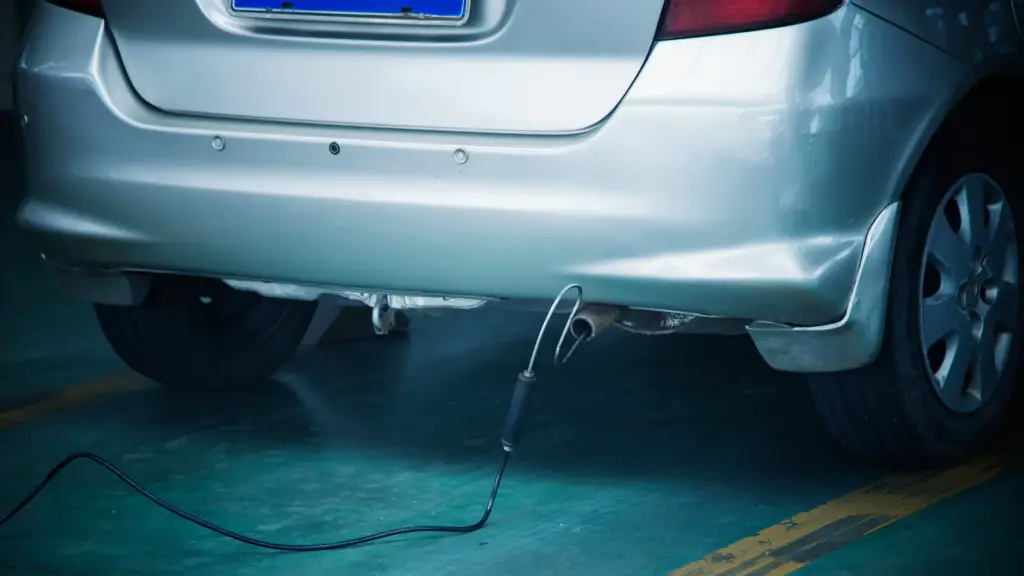
Other ways to check catalytic converter failure in your car
An experienced mechanic will remove the oxygen sensor or unscrew the exhaust downpipe. Running over road debris can also damage the catalytic converter over time. You can use an OBD scanner for this purpose too. Moreover, testing the backpressure is another way to confirm your suspicions, and you can do it with the help of a low-pressure gauge.
This gauge will show a reading of 1.5 PSI for an idle engine at maximum. Some engines can go beyond that, but this is the standard. Now, press the gas pedal and rev the engine and you will see it can go up to 3 PSI at 2000 RPM and remains steady. But if it doesn’t remain steady or gets higher, then it’s an indication that backpressure is developing.
Causes of Catalytic Converter Clogging
These are some of the reasons for clogged cat converters,
- Contaminations due do various substances, including oil and antifreeze.
- Bumpy roads and debris can also cause dents to these catalysts.
- Issues with the overall engine performance.
- Engine tuning is needed.
- Damaged fuel filter.
- Damaged cylinder head gasket.
- Bad spark plug wires or spark plug itself.
- Unburned fuel is entering into the exhaust emissions system.
- The oxygen sensor is not working properly.
How Do You Unclog a Catalytic Converter?
You can go for a catalytic converter cleaner at any automotive supply store and can buy it online according to the make and model of your car.
- First, you have to leave your car with the ignition system on or drive your car until only 15 liters of gas remains in it. Don’t go cleaning your converter with gas less than this in your car.
- Now pour the cleaner into your gas tank. The instructions on the can will tell you how much of it you need to use.
- Now put the gas cap back on and drive for at least half an hour and try to go for a highway. Continue driving until the tank is close to empty. Check to see your engine shouldn’t overheat at this point.
- Clear your OBD trouble code and allow it to calibrate and recheck the reading for the converter.
This method will work fine if your cat converter is not clogged terribly. If it is clogged beyond the point where you can unclog it, then you will have to replace it.
Can I Drive with a Clogged Catalytic Converter?
Driving with a bad or clogged converter is not very dangerous; if it is clogged, you can still drive your car like normal. But if it is totally plugged then your car will not run. But it is advisable not to drive too much with a clogged catalytic converter, or it will continue to get plugged further.
But you will be able to see dark smoke coming out of your tailpipe. And this is the most common type of sign that your catalyst is not working. You will also notice a significant reduction of power in your engine and in most cases. The primary cause is the pollutants over the lifetime of a vehicle when such a sign appears it’s time to get your vehicle examined.
When the exhaust is running clean, you won’t see any smoke coming out from the pipe. Damaged piston rings are another one of the issues that can jam the exhaust and can cause a problem.
Preventing Catalytic Converter Problems
To make sure that your catalytic converter keeps working properly, you have to follow the maintenance schedule of your vehicle strictly. The fluid and chemicals running through the engine of your vehicle and its exhaust system will remain clean when they are frequently checked and changed.
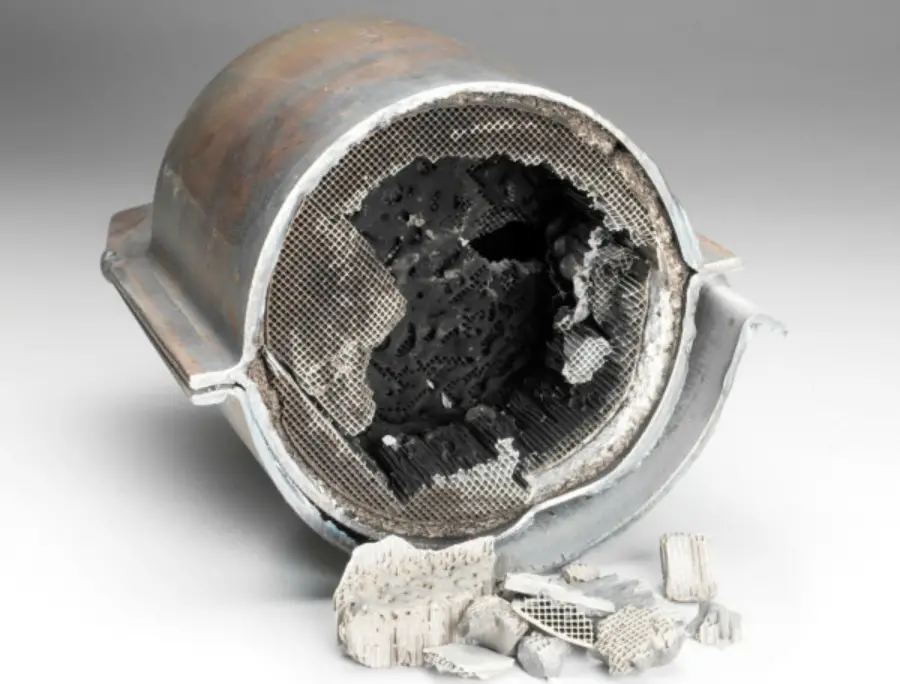
Apart from that you also have to make sure that you don’t drive on bumpy roads with too much road debris. It can damage your vehicle’s exhaust manifold. Dents to the exhaust system of your vehicle can also cause issues to the catalytic converter. It can also cause problems in other parts of your vehicle. You have to be careful about these things.
When your vehicle’s sensor detects and illuminates the engine light, you shouldn’t ignore it. Keep these alerts on high priority or the performance of your vehicle will deteriorate over time, and you will have to go for heavy repairs.
Also, keep in eye on the spark plugs of your vehicle. These catalysts have a very critical role to play in your vehicle’s overall performance. When you take care of it and other parts, your vehicle will continue to perform smoothly.
Final Word
Your car’s catalytic converter is an integral part of its engine system. When the catalytic converter doesn’t work, your engine starts to clog as does your exhaust system and it will start choking and prevent you from driving your car. Try to keep these things under check not for the sake of your beloved vehicle but for the environment as well.
